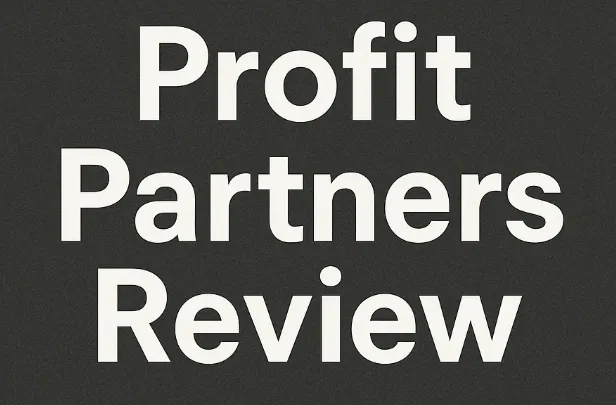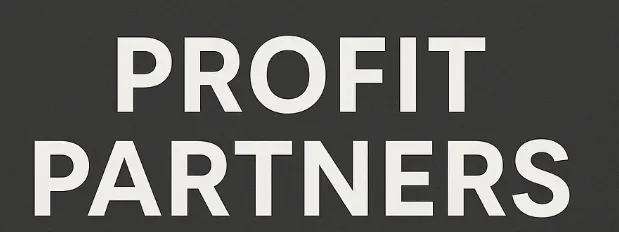Profit Partners Review - Is Daecian Sparkes-Young's Course Worth Exploring?
Welcome to this Profit Partners review. After testing this program myself, it became clear that it’s designed for people who want a structured, beginner-friendly entry point into dropshipping without spending thousands upfront.
It’s presented as a “partnership” model where you follow a pre-built system rather than building everything from scratch, and for me, that lowered the usual overwhelm that comes with e-commerce.

The lessons cover product selection, supplier setup, ads, and automation. Everything’s arranged inside a simple dashboard, and the videos are easy to follow, even if you’ve never launched a store before.
I found that refreshing compared to the typical FBA or Shopify courses that bury you under advanced strategies too soon.
The biggest issue is that the marketing around the $8/month pricing is misleading.
That’s just for the starter tier or trial — the actual tools and store setup cost more once you move forward. It’s not a scam, but it’s definitely not “under $10 a month” once you start scaling.
Pros
Low entry cost to get started with the basics.
Simple structure that walks you through every stage.
Active beginner community and clear tutorials.
Cons
Real costs rise fast once you go beyond the trial version.
Focuses more on process than innovation — templates feel generic.
Limited transparency on long-term results or real profit margins.
If you’ve been trying to find a way that doesn’t feel overwhelming, this helped me realize what to focus on early so you don’t burn time or money repeating beginner mistakes.
What Is Profit Partners?
The program walks through every main step of starting and running a dropshipping business — from product selection to running ads and handling fulfillment.
It’s structured to make the whole process feel less intimidating, especially if you’re starting with no prior experience.
The early lessons focus on finding products that already sell, using their database and research tools.
It’s a very guided process — you don’t need to manually search across dozens of sites or rely on guesswork.
I liked that it simplified research into a few measurable indicators like demand, competition, and profit margin.
Once you pick a product, the training moves into store setup and supplier connections.
It integrates with platforms like Shopify, and they show how to set up automated product imports, pricing rules, and delivery tracking.
It’s a lot of small steps, but the platform keeps it organized enough to follow without feeling lost.
The next phase covers marketing and ads, which is where most beginners struggle.
They walk through Facebook and TikTok ads with templates you can copy, explaining how to test small budgets first instead of spending heavily right away. That part was useful — it gives you a plan to follow, not just theory.
Finally, there’s a section on automation and scaling, which is basically how to outsource customer service and fulfillment once your store starts making sales.
It’s not revolutionary, but it ties everything together nicely.
My Personal Experience With Profit Partners

When I joined, I didn’t expect much. I’ve seen dozens of e-commerce programs that promise “done-for-you” systems, but usually end up being generic templates and vague advice.
What surprised me here was how easy it was to actually start moving. The dashboard was straightforward, the steps were in order, and I could follow along without stopping every few minutes to look things up on YouTube.
The first win for me came during product selection. Normally, I’d spend days comparing suppliers, reading reviews, and checking if products were already saturated.
The product finder tool inside this program narrowed it down fast — not perfect, but enough to test an item without analysis paralysis. I picked something simple and had it listed within the same week.
That said, I quickly realized the $8/month plan doesn’t get you very far. To actually build a real store with working integrations, I upgraded to a higher tier and spent a bit more than expected.
Once I did, things made more sense. The training unlocked new sections, and I could finally connect my ad accounts and automate fulfillment.
The ad tutorials were clear but basic. I followed their structure, ran a small $50 test campaign, and got my first few clicks — no sales yet, but at least I knew what was happening.
Compared to how messy my first attempts with dropshipping used to be, this setup felt smoother and less frustrating.
Overall, it gave me enough confidence to keep testing instead of second-guessing every move. It’s not perfect, but it works as a clean starting point.
If you’ve ever felt like every step was harder than it should be, be it in e-commerce or anything else, this showed me how much difference a clear, guided structure can make when you’re still trying to figure things out.
Profit Partners Pros and Cons
The main strength of this program is its simplicity. It’s clearly built for beginners who want to get a feel for e-commerce without being overwhelmed.
The step-by-step structure actually delivers what most other “easy” systems promise but rarely execute well.
Everything is neatly organized — you watch a video, follow the steps, and see results from each stage before moving on.
Another thing I liked was how practical the setup was. You don’t need fancy tools or a big team to start.
The templates, integrations, and product database do most of the heavy lifting early on.
It’s not flashy, but it’s functional, and that’s what beginners need most. The interface is also clean and intuitive, which helped me move faster compared to clunky, outdated platforms I’ve used in the past.
The community deserves mention too. It’s small but active, and the moderators actually answer questions.
That might not sound like a big deal, but when you’re stuck on something small — like a shipping setting or ad approval issue — a fast answer saves hours of frustration.
On the downside, the marketing is misleading. The $8/month price gets you in the door, but to access real features or ad training, you’ll need to upgrade.
That jump isn’t unreasonable, but the lack of clarity makes it feel a bit bait-and-switch at first.
The templates, while convenient, also make every store look similar. If you plan to stand out, you’ll have to customize heavily.
And like any dropshipping system, results depend on testing products and spending money on ads — no matter how good the course is, there’s no shortcut around that.
How Much Does Profit Partners Cost?
The pricing is where things get a little confusing. The program advertises itself as just $8 per month, but that’s really for the entry-level plan — more of a starter or trial version.
Once you actually get inside, you’ll see upgrade options that range from $97 to several hundred dollars, depending on what level of training, store setup, or automation you want.
I started with the basic plan and quickly realized I needed at least the mid-tier upgrade to make real progress.
The entry plan gives you access to a handful of video lessons, a basic product research tool, and limited store features.
The upgraded plan, on the other hand, unlocks the full course, ad training, templates, and the ability to connect your actual e-commerce store. Without it, you can’t really follow the system all the way through.
There’s also an option to bundle store setup or “done-for-you” components, which I didn’t take, but others in the community seemed to like.
From what I could tell, it’s mostly template-based work done by their internal team — nothing revolutionary, but a time-saver for beginners who don’t want to mess with Shopify settings.
As for refunds, they technically offer a 14-day money-back guarantee, but it only applies to the entry-level plan. Once you upgrade or use custom features, that window closes.
I didn’t test the refund process myself, but several users mentioned getting quick responses when requesting cancellations, which is a good sign.
Overall, the pricing model feels a bit like a funnel — low-cost entry, then progressive upsells.
That’s not necessarily bad, but it’s something you should expect going in, so it doesn’t catch you off guard.
Final Verdict
After going through it, I’d call this a starter system, not a full business in a box.
It gives you the structure, tools, and community to get moving — but you still need to put in the work to test, tweak, and learn from results. For someone new to e-commerce, that balance actually makes sense.
It doesn’t sell the fantasy of overnight success, but it also doesn’t bury you in advanced theory that you’ll never apply.
The best part for me was how simple it made the first few steps. Instead of being stuck on product research or confused about where to begin, I had a clear direction.
That alone saved me a lot of time. But once I wanted to go deeper — like testing ads or customizing my store — the limits of the lower plans started showing.
Upgrading gave me more freedom, but it also meant I ended up spending more than I initially expected.
The training itself is solid for what it is: a guided, practical way to start learning how dropshipping really works.
It’s not original, and it’s not flashy, but it’s clear enough to help you take action instead of just watching another video series.
If you treat it like a foundation instead of a shortcut, you’ll get your money’s worth.
For me, it helped bridge the gap between “I have no idea where to start” and “I actually understand what to do next.” That’s not something many entry-level programs pull off well.
If you’ve been caught in the cycle of trying, quitting, and starting over again, this helped me realize what actually makes progress feel consistent — even when you’re still learning.